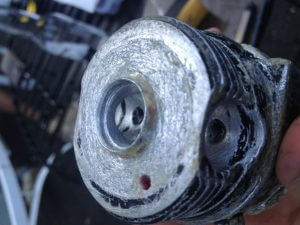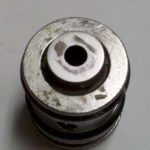
This month’s blog is dedicated to the frustrated spray foamers out there and is more of a resource announcement. It is about a video to help anyone that’s spent between 30 minutes and two hours, cleaning a gun, only to go back into the job, pull the trigger 5 minutes, and be right back in the trailer with the same problem (grrrr!!!). If you’ve sprayed for a while, you know how painful this can be. If you’re new to the industry, save this link, you might need it tomorrow.
Downtime just means making less money. As a sprayer, these aggravating gun problems plagued me in my first few months. That is specifically why I’m sharing the most important tip I’ve learned in 15 years of spraying foam. It’s never failed me.

With air purge guns, chemicals come out when you pull the trigger, and the pathway switches back to air as soon as you let go. But, when a chemical bypasses or floods around a seal and fills air passages in the gun, you are done. This tragedy can occur at any moment and is recognized by a fine mist of chemical, or material, escaping with the air that is purging the gun.
There are 6 spots where this happens, so the video demonstrates a test you can do to prevent this evil situation from happening over and over. These 6 spots are where chemical sits on one side of the seal and air is on the other. The good news is, once you determine which material is bypassing a seal and misting out the front, you know where to give the most attention when you break down the gun. Once you address all 6 seals and the gun passes the test, you should be good to go back to making money.

While this video focuses on the Graco Fusion AP gun, the same principles apply to other guns commonly used in the industry. Certainly, different guns have their own “sealing surfaces” and PSI requirements, but the concept is the same. SPF chemicals should come out of a spray gun only when the trigger is pulled.
Hopefully this resource helps you avoid downtime and make more money. If you have questions on any other technical issues, visit our resource library, check out our YouTube channel, or reach out to us at IDI. We are your partners with the service and support you need.